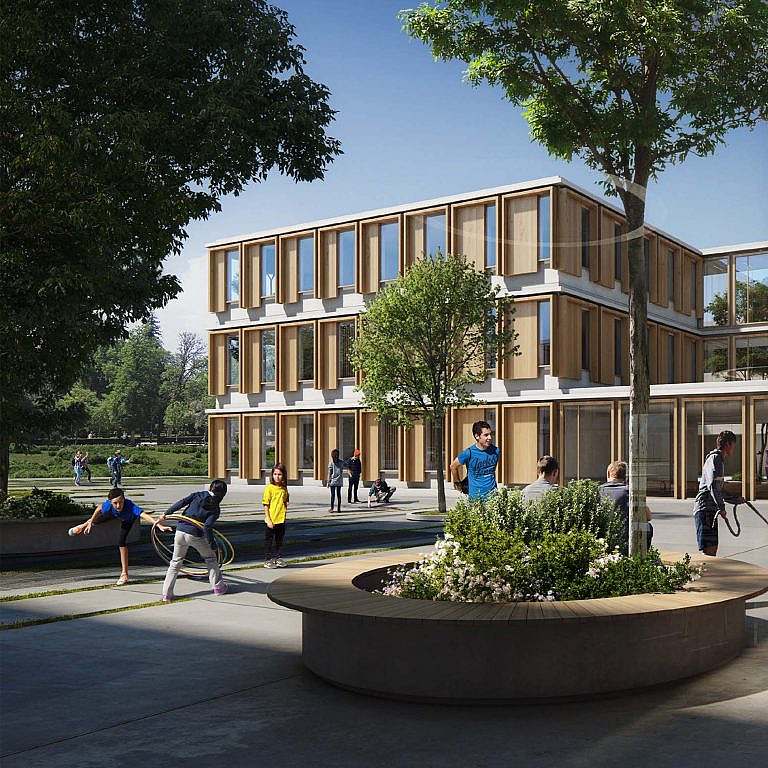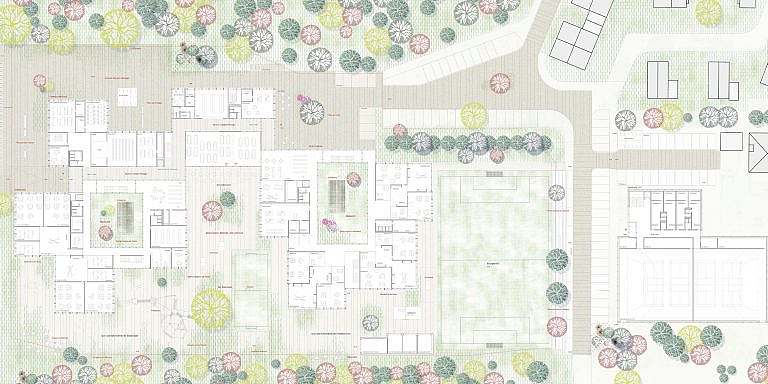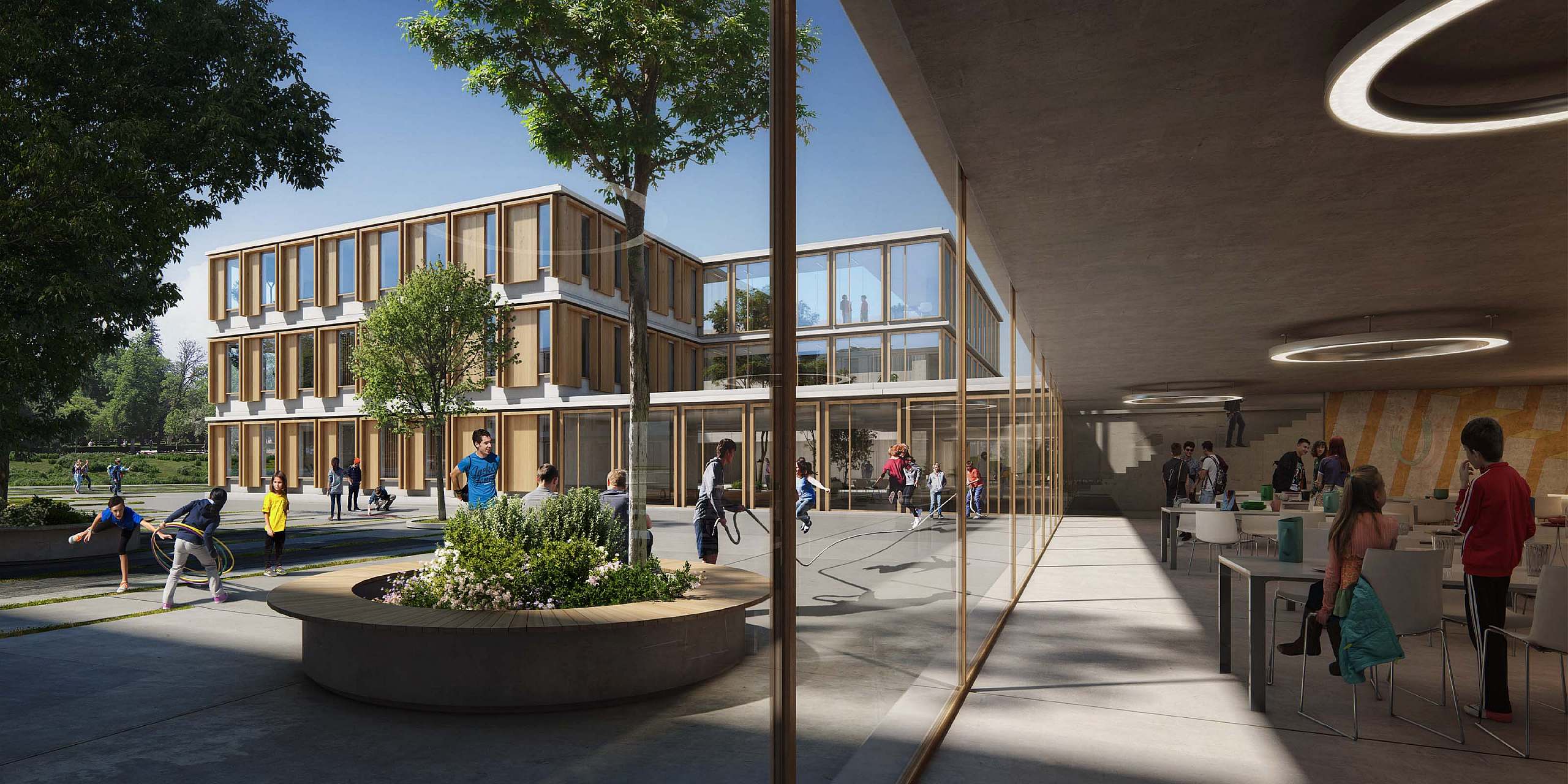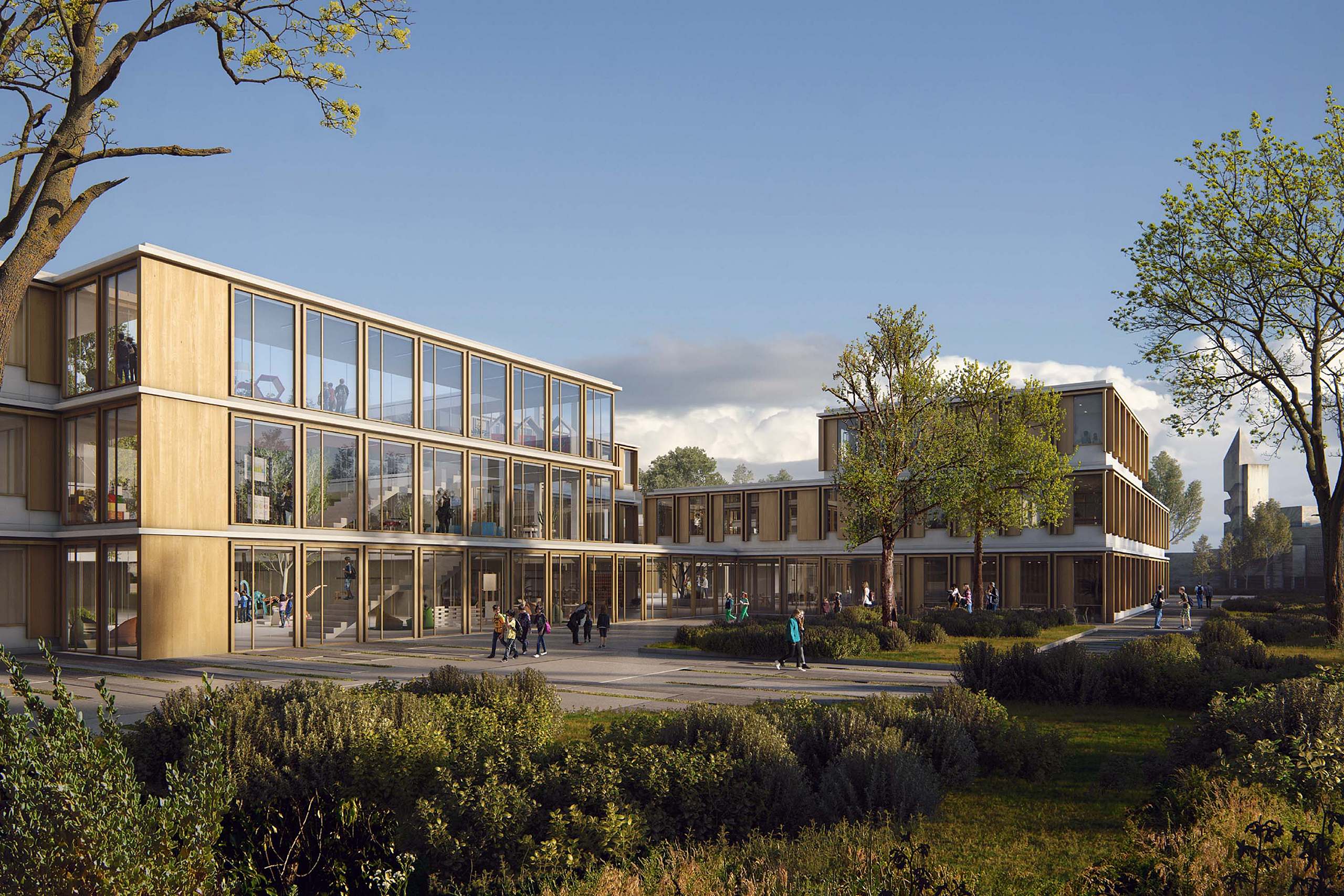The main architectural idea of the project is to create a well-lit building with a visual connection to the surrounding landscape, so that teachers and students already experience a welcoming and manageable learning environment from the outside. A building that opens recreationally down to the nearby river and at the same time forms an inner and outer course along the school, binding the city together, like a social-cultural hinge.
Erkrath, Sandheide
Germany
City of Erkrath
2020
12 600 ㎡
Kuttner & Kahl Landscape Architects, Wetzel & Behold
Architectural idea and preparation, competition project


Recreational landscape spaces
The school's iconic sycamore tree is preserved as part of the history and is centrally located next to the canteen and the common outdoor area. Other trees on the site have been preserved as far as possible, which is possible due to the open structure of the school. The surroundings are characterised by the green woodland and the river to the south, which frame the site and create the school's recreational landscape space. Another feature is the dense tree cover down to the river. These features are used to create distance and openness to neighbouring buildings and the city, and to welcome the children of the area as well as local residents.

Three buildings connected in one
The learning environments are grouped in smaller clusters around local squares with proximity to the landscape on all sides. A learning environment that creates spatial flows with natural transitions between community and immersion in one intuitive architectural approach. The two schools, Grundschule (primary school), Förderzentrum (special needs school) and Gemeinschaftshaus (community house), appear from the outside as three different building bodies, connected on the ground floor by an inner corridor.
This inner stroke is the unifying nerve of the project. It ties the two schools and the Gemeinschafthaus together and makes it easy to move across the area. Access to the school is thus simple from both east and west. In the west, the Grundschule is closest to the city, and in the east, the Förderzentrum is near the residential area. Students at both schools can choose to arrive from either side and walk along the inner lane to their classroom. The same applies to teachers and administrative staff.

Various focal points link the interior and exterior
It is the school's unifying inner corridor, functionally and visually connecting all inner and outer courtyards, through the canteen exit to the playgrounds to the south, down to the river or across to the sports hall - an intuitively welcoming learning and community axis. All classrooms are arranged around a small square - a home area - defining the framework of a gathering point for the surrounding classes. For both the Grundschule and Förderzentrum, the cluster's focal point is located in such a way that it links the outer landscape with the inner green courtyard in a diagonal visual connection. The canteen can be separated from the school so that its functions can be used independently of school opening hours.
The sports hall is arranged so that it can be divided into two or used as one large hall for larger events. On the first floor is the multipurpose room, which is a flexible space for the residents of the area. The multi-purpose room is visually connected to the main hall, so you can look down on the sports activities taking place.

